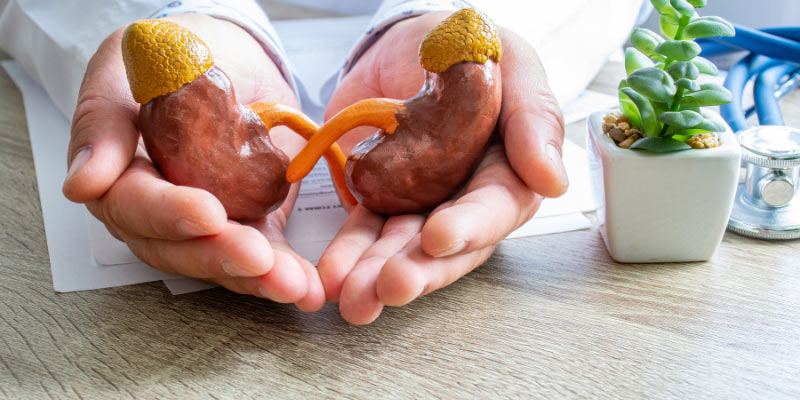Premenstrual syndrome significantly affects physical, emotional, and behavioral symptoms in the two weeks preceding menstruation. They majorly have a concern over a large percentage of menstruators. Age, hormone levels, and health affect these symptoms.
PMS symptoms vary significantly between people and throughout life stages: hormonal changes, pregnancy, and menopause cause variability. To understand the transformative nature of PMS, it's crucial to examine it decade by decade.
PMS In Your 20s
The 20s serve as a foundational period for many physiological aspects, including menstrual health.
Stabilization of Menstrual Cycles
Following the irregularities often observed during the teenage years, the 20s generally herald more predictability in menstrual cycles. During this decade, ovulation becomes more regular, leading to discernible patterns in PMS symptoms. Such regularity is a relief for many, offering the ability to anticipate and prepare for signs.
Common Symptomatology
The variety of PMS symptoms in one's 20s is vast. Physical symptoms like bloating, headaches, and fatigue may become recurrent monthly visitors. Emotional challenges such as mood swings, irritability, and mild depressive feelings can also take center stage.
Some symptoms remain consistent, while others may observe fluctuations based on lifestyle factors like diet, exercise, and stress.
Role of Hormonal Contraceptives
This decade often coincides with the commencement of hormonal contraceptives for many. Birth control pills, patches, and injections prevent unwanted pregnancies and influence menstrual health. For some, these contraceptives reduce PMS severity, while others might experience amplified symptoms or different side effects. It underscores the importance of consulting with a healthcare provider when choosing a birth control method.
Addressing Deviations
Consistency in PMS symptoms allows for easier management. However, sudden or significant deviations from the norm should prompt a visit to a healthcare professional. Conditions like endometriosis, polycystic ovary syndrome, or thyroid disorders can manifest in the 20s and influence menstrual health.
PMS In Your 30s

The 30s ushers in physiological and emotional changes that can reshape the PMS experience.
Early vs. Late 30s
While the early 30s may resemble the patterns established in the previous decade, the late 30s can introduce novel challenges. Hormonal changes become evident as one approaches the perimenopausal phase, leading to varied PMS experiences.
Life Events and PMS
Pregnancy and childbirth can significantly influence menstrual cycles. Postpartum hormonal shifts and motherhood's physical and emotional challenges can amplify PMS symptoms. Furthermore, a history of mood disorders, whether personal or familial, may become more pronounced during this period.
The Spectrum of PMDD
Premenstrual Dysphoric Disorder, a severe form of PMS, may become more apparent during the 30s. Its symptoms extend beyond standard PMS experiences, with pronounced emotional and psychological impacts. Given the severity of PMDD, monitoring signs and seeking timely medical intervention is vital.
PMS In Your 40s
This decade is pivotal, characterized by significant shifts in menstrual health, primarily driven by perimenopause.
Transition to Perimenopause
The 40s often mark the onset of perimenopause for many individuals. Hormonal fluctuations during this transition phase can be dramatic, leading to alterations in menstrual cycle length, flow, and PMS experiences. These changes can span several years, requiring constant adjustments in symptom management strategies.
Amplified PMS Experiences
PMS symptoms may reach heightened intensity levels with the hormonal landscape in flux. New challenges like sleep disturbances, night sweats, and increased mood variability can arise alongside typical symptoms.
Looking Beyond PMS
It's essential to differentiate between symptoms of PMS and those emerging from the onset of menopause. For instance, while hot flashes can be a symptom experienced during severe PMS, they are also a starting point of menopause. Engaging with a healthcare provider can help distinguish between the two, ensuring appropriate care and management.
Can You Manage PMS?

Understanding how PMS evolves with age is critical for devising effective management strategies. As the decades unfold, the approach to handling premenstrual syndrome symptoms must evolve.
The Evolution of Symptoms
We must define PMS first. PMS is a set of physical, psychological, and behavioral symptoms two weeks before a woman's period. PMS symptoms include mood swings, tiredness, bloating, and cramps. These symptoms range in intensity and can profoundly impact daily life.
Addressing Physical Pain
Pain, especially cramping, is a frequent PMS symptom. These can be treated with OTC painkillers. A balanced diet and regular exercise reduce physical problems. Heat application, such as a warm cloth or heat pad, can help relax muscles and ease PMS cramps.
Tackling Emotional and Psychological Challenges
Emotional fluctuations, from irritability to PMS depression, are hallmark symptoms of PMS. Managing stress is vital, as stress can exacerbate emotional symptoms. Meditation, deep breathing exercises, and counseling can be beneficial. For severe emotional manifestations like PMS depression, it's essential to consult a healthcare professional, as medications or therapy may be necessary.
Diet and Lifestyle
Modifications in daily habits can have profound effects on managing PMS symptoms.
Nutritional Interventions
What we consume directly affects how our body responds to hormonal fluctuations. Reducing salt and sugar can help alleviate bloating. Calcium-rich foods can help with mood swings and PMS cramps. Magnesium-rich foods help with water retention and bloating.
Regular Activity
Physical activity can alleviate multiple symptoms of PMS, from PMS depression to physical pain. Keeping the body in motion can relieve PMS symptoms, whether it's a brisk walk or a yoga session.
Sleep and Hydration
A well-rested body responds better to the challenges of PMS. Maintaining a regular sleep schedule and staying hydrated are key components in managing premenstrual symptoms.
Medical Interventions
For some, lifestyle adjustments might not be sufficient to manage the symptoms associated with PMS. In such cases, medical interventions can offer respite.
Over-the-Counter Solutions
NSAIDs, commonly available at drug stores, can effectively manage PMS cramps and headaches. However, always consult with a healthcare provider before starting any medication.
Hormonal Therapies
Oral contraceptives, patches, and implants can regulate hormones, potentially alleviating symptoms of PMS. Yet, their impact can vary among individuals. Some methods reduce PMS severity, while others might face heightened symptoms.
Severe Emotional Symptoms
PMS can sometimes cause severe emotional turmoil, from intense mood swings to PMS depression. In such cases, antidepressants or anti-anxiety medications might be recommended. A healthcare professional can guide these choices, ensuring safety and efficacy.




